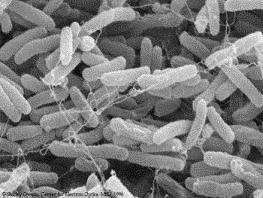A message encoded in artificial DNA can be stored within the genome of a self-replicating bacterium much better than has been achieved so far. This is what American scientists have shown.
Avi Blizovsky

A message encoded in artificial DNA can be stored within the genome of a self-replicating bacterium much better than has been achieved so far. This is what American scientists have shown.
Their concern is that all current ways of storing information, from paper to electronic memory may be lost or destroyed. Thus they proposed a new type of memory - within living beings.
"One of the concerns is how it will be possible to preserve important information during a nuclear disaster," said computing expert Park Chung Wong, from the Pacific Northwest National Laboratory in Washington state, which was established as an atomic energy research institute.
A catastrophe in which a huge electromagnetic pulse wipes out the entire electronic infrastructure "Bacteria may be an inexpensive and even stable medium in the long term in terms of storing information," Wong said.
The scientists take the lyrics of the song "It's a Small World" literally and turned them into a four-letter DNA code. They created an artificial DNA sequence that preserves different parts of the song. These DNA messages, each 150 bases long, were inserted into the bacteria E. Coli and Deinococcus radiodurans.
"This letter is particularly good at surviving extreme conditions, Wong said. "He can manage in high temperatures, extreme dryness, ultraviolet radiation and ionizing radiation that is a thousand times more deadly than that which kills humans.
"The beginning and end of each inserted message includes special DNA tags prepared by the scientists. These instructions prevent the bacterium from recognizing the message as the DNA of an invading virus and trying to destroy it," says Wong.
The magic of the bacterium is that it retains the information, so even after hundreds of generations of bacteria we can still read the exact message," said Wong. "Once the DNA message is inside the bacterium, it is protected and can survive." A milliliter of liquid can store a billion bacteria, the potential of the capacity is enormous.
Deinococcus is able to survive in extreme conditions and is considered to be a good repairer of all the mutations that appear randomly in the DNA code, but Hugh Williams, a bacteriologist from Imperial College London says that the short length of the message means that it survives divisions of 100 generations.
Williams believes that a greater danger than changes and mutations in the message is the fact that some bugs may adapt to their environment better than others and survive in place of the original message. So far Wong and his colleagues have kept the different messages in several separate colonies, but in the future they will also be able to retrieve the message from mixed colonies.
"If you grow the colonies separately, less adaptable bacteria may be lost over time," he said. "The question is whether we can keep all the message colonies, but that is already a matter for further research."
